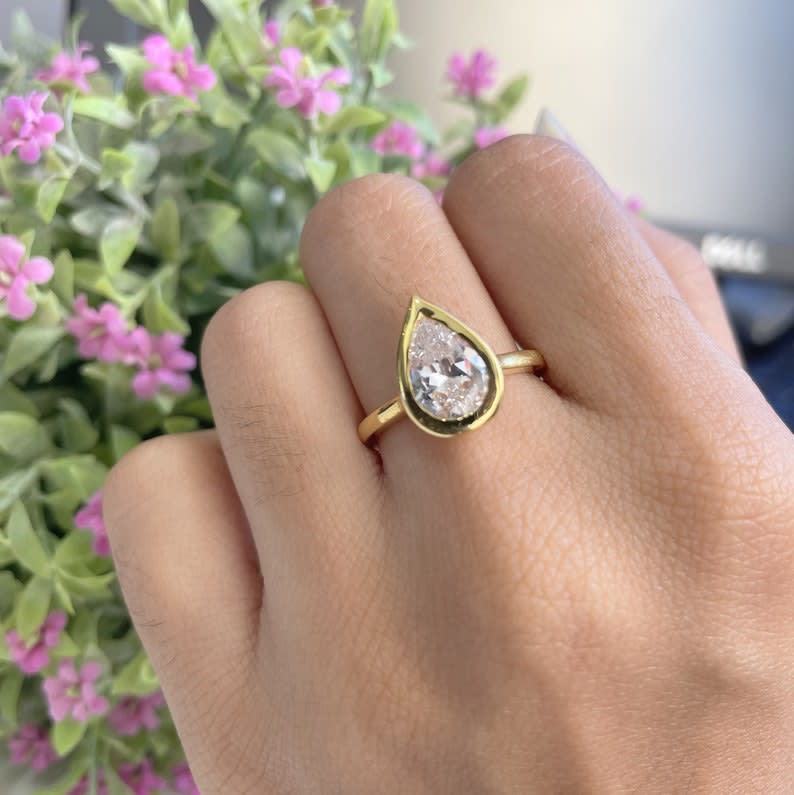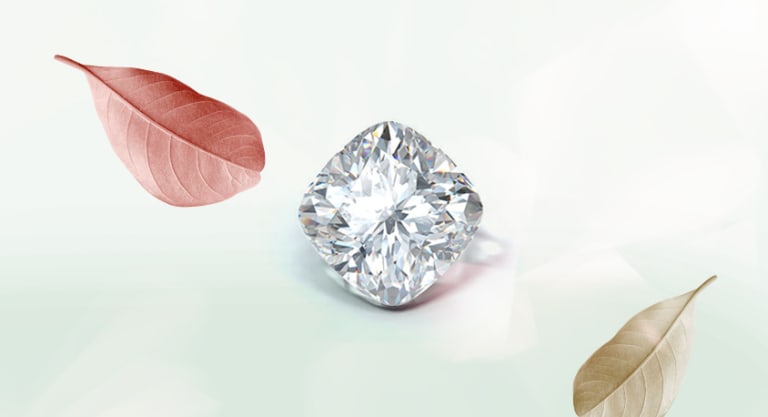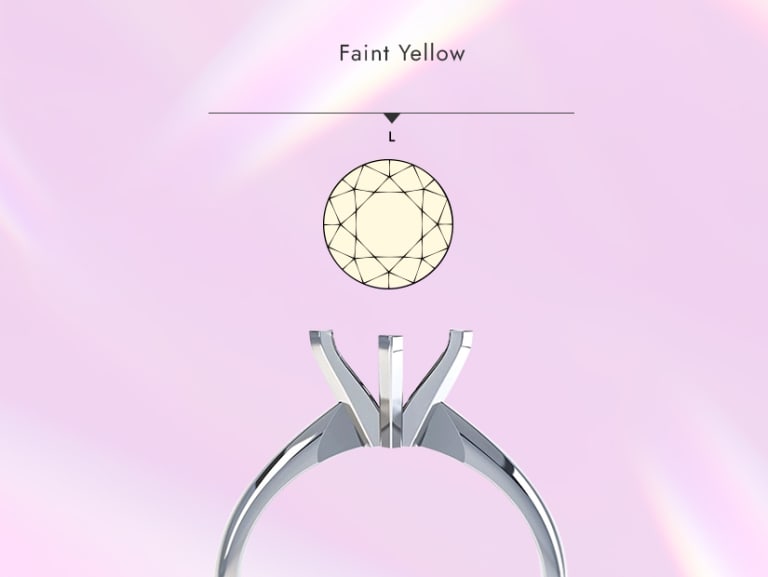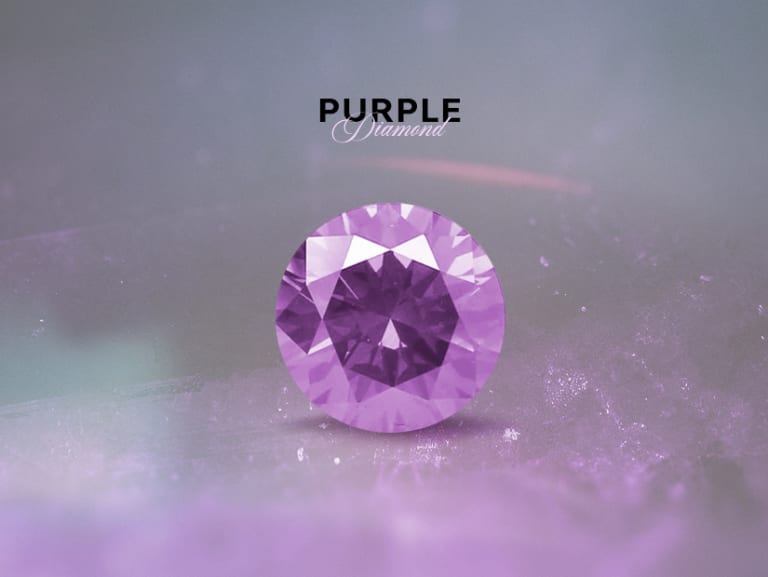Ultimate Buying Guide of Pear Shaped Diamonds
Listen & Feel Full Article…
What are Pear Shaped Diamonds?
Pear shaped diamonds are pointed at the top and curved at the bottom. The diamond is increasingly popular for engagement rings due to its unique shape, making it suitable for earrings and pendants.
A diamond consists of 58 facets, with a pavilion consisting of four to eight facets. The ideal ratio for length to width should be between 1.38 and 1.55. Diamonds have a ‘bow tie’ effect due to the shape of the stones, where a dark shadow may appear across the width of the stone. Choosing a high cut grade always results in a bow tie effect because of the angles and proportions of the cut.
The 4C’s of Pear Shaped Diamonds
Cut
A pear shaped diamond is not graded for its cut by certification agencies like the GIA, as the oval cut and other fancy shaped diamonds do. Pear shaped diamond have too many variables and differing ratios and proportions for a clear cut grading system to work. Nevertheless, you can prepare other information to understand what would make a pear shaped diamond a quality cut.
The pear shaped diamond has its vocabulary for the elements of its shape because of its unique shape. The head starts at the top. The shoulder, the belly, and the wing below end at the bottom. You can test symmetry by drawing a line straight down the middle of the stone. The stone should have all these features symmetrical if it’s well cut.
A pear shaped diamond should have rounded shoulders and wings, even if neither side rises or falls differently from the other side. When the wings narrow to meet the point, they should form attractive arches. If the wings are too flat, the stone appears narrow; if the wings are too rounded, it seems too small.
If you’re looking for a pear shaped diamond with the perfect length to width ratio, industry standards recommend 1.55 to 1.70. But it’s up to you. Pear cuts are elongating because of their shape, but keep in mind that lower ratios have wider and shorter cuts. At the top, they can get long and look like marquise cuts.
Color
Pear shaped diamond will show any body color more prominently than oval and marquise cut diamonds. This feature is intrinsic to the cutting style, and The pear cut is not affected by this. The color grade should be G or better when using white gold or platinum for this consideration.
You may be able to get away with dropping down to an I color ring if you intend to use a yellow gold or rose gold setting for the ring. The warm tones of the yellow and rose gold metals help counteract the diamond’s more vivid color.
Clarity
Diamonds with a pear shaped are excellent at concealing inclusions. Their brilliant faceting and shape make them very suited to creating eye-clean clarity in higher clarity grades, from the rounded to the pointed end. However, it is vital not to have large inclusions too close to the point as that is the diamond’s weakest area and makes it more likely to chip or break.
Pear shaped diamonds are the same as oval diamonds in that they show a bow tie effect that varies from light gray to black. However, you may find options with a minimal bow tie if you combine other gradings. This stretch of darkness can be hard to avoid. When possible, it’s best to see pear shaped diamond in person.
Carat
A pear shaped diamond’s final cut proportions, and carat weight can vary a lot. Each pear shaped diamond will not necessarily change linearly in size and dimension because they’re cut to the ideal proportions and length-width ratio for the stone’s quality.
For example, a 1 carat pear shaped diamond with 8.40 x 5.40 mm and a 0.97 carat pear shaped diamond with 8.50 x 5.50 mm. The smaller carat diamond may have the same ideal cut, but when the price increases exponentially, it will likely be less expensive because it weighs a little less. The larger dimensions will make it seem more prominent, too.
These two diamonds are incredibly close in measurements, yet the 1.40 carat sells at 27% less than the 1.50 carat. Both are the same color and clarity. There are savings to be realised by buying just under a critical weight class like 1.50 carat, although one would still need to see the stones in person to decide.
Pricing of Pear Shaped Diamonds
Diamonds of the pear shape are generally 15-30% less expensive than round diamonds, which usually carry the highest price per carat. There is a cost difference because of a better yield from rough diamond cutting and less waste. Excellent quality pear shaped diamonds are relatively rare. They come in various carat sizes. However, the dimension will often play a larger role than carat size when choosing a pear shaped diamond.
A pear shaped diamond can cost between 3000 to 15000 dollars, depending on the quality. There is a big difference in price between two 1 carat pear shaped diamond regarding clarity and color grades.
Best Settings for Pear Shaped Diamonds
Prong Setting
Pear shaped diamond look great in prong settings. A prong is a metal piece that holds your diamond in place and allows it to be displayed to its best advantage without blocking your view. You may choose a prong setting with accent diamonds on the band, although many prong settings are solitaire settings.
Pear shaped diamond is typically set in prong settings featuring five or six prongs with a V-tip to protect the pointed side. Your diamond will be more secure if there are more prongs surrounding it. You must decide what’s more important to you, security or visibility. The prong setting leaves more of the stone exposed for visual purposes, but it can also be more fragile.
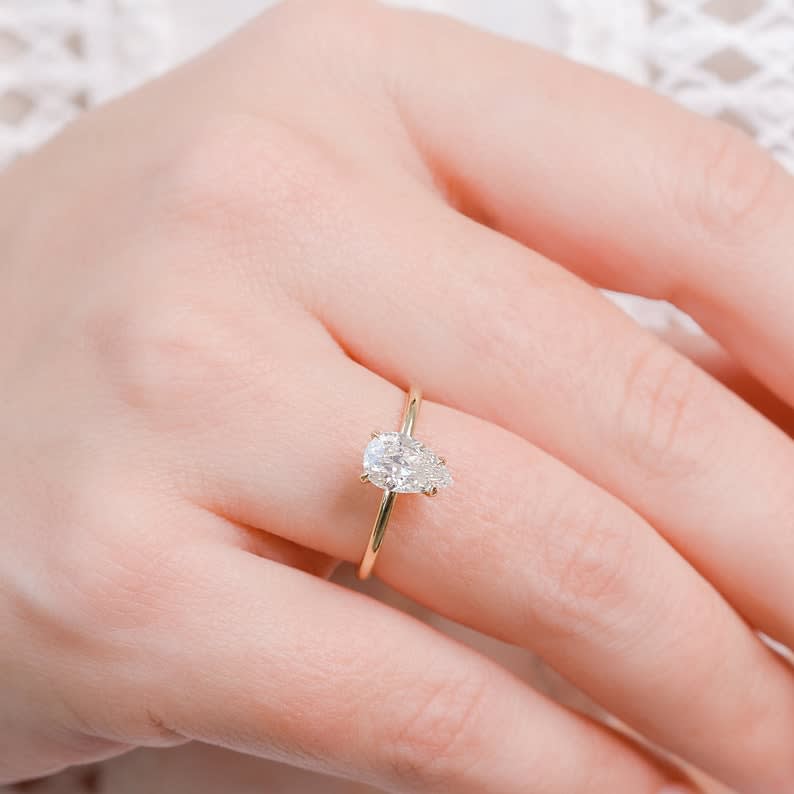
Solitaire Setting
Solitaire settings are another way to show off the pear shaped diamond’s beauty. You can’t go wrong with a solitaire setting if you love simple jewelry because it’s timeless, elegant, and straightforward. The single center diamond shines brightly, as this style draws all the attention.
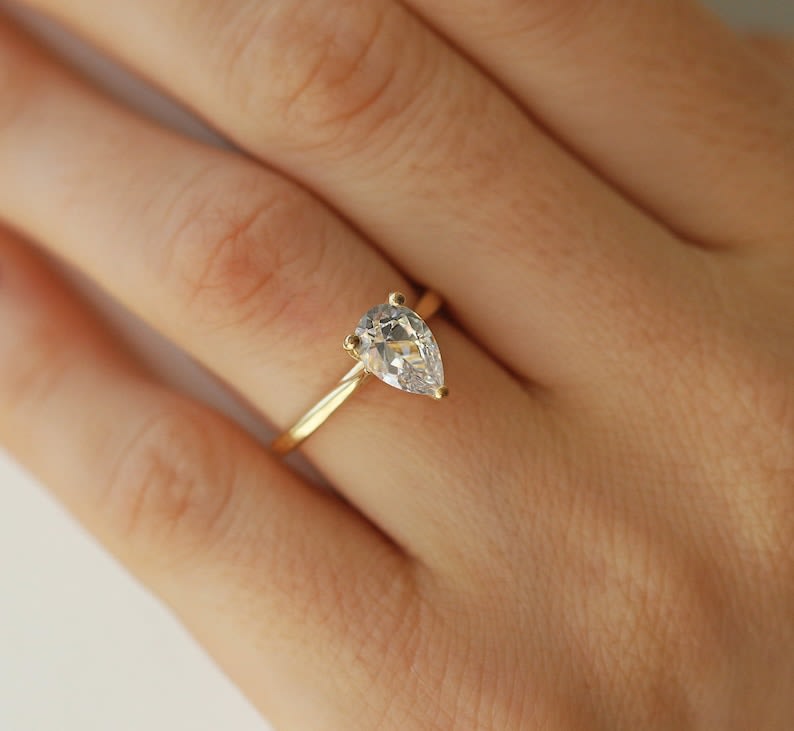
Halo Setting
Halo settings are another beautiful setting option for pear shaped diamond. A halo setting surrounds your center stone with smaller diamonds or accent stones. The pear shaped diamond protects from dings and other damage while allowing your center stone to appear larger.
The accent stones in halo settings tend to make them more expensive than in prong settings. Halo settings can also be harder to clean, but for the stunning sparkle they have from every angle, these cons might be worth it!
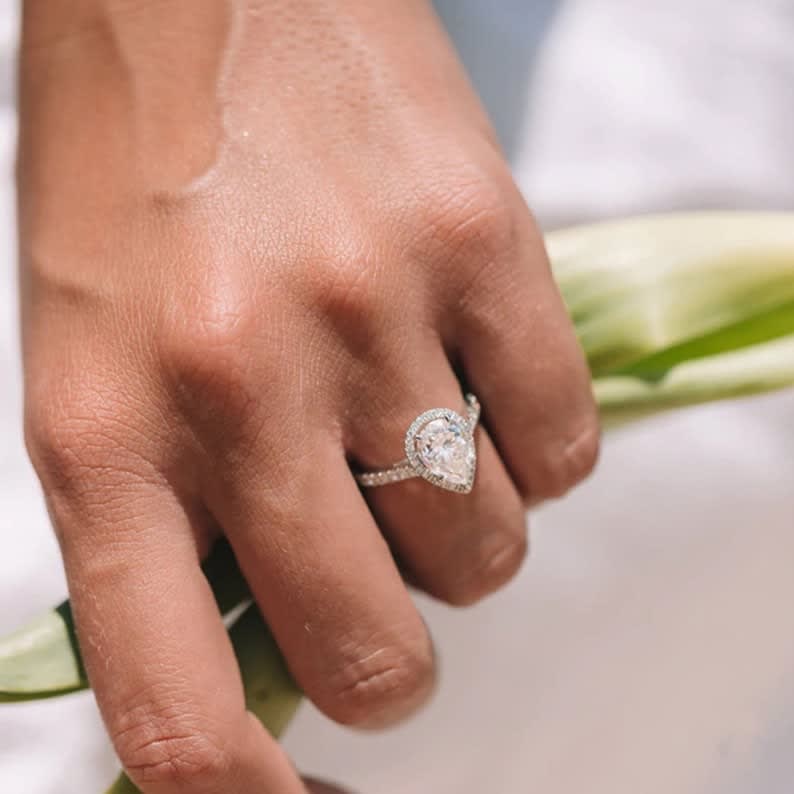
Bezel Setting
The bezel setting is the best choice for a pear shaped diamond if you want the diamond to be protected from everyday wear. A bezel setting encircles the diamond entirely with a thin metal frame. Diamond edges are protected from dings and hits by this design. This option is popular because it is minimalist design and won’t snag on clothing like pronged settings.
The bezel setting covers most of your diamond, but it won’t hide its shape. Bezel settings make stones look smaller than they are, which some people don’t like. The sides will be exposed if you choose a half bezel setting!
